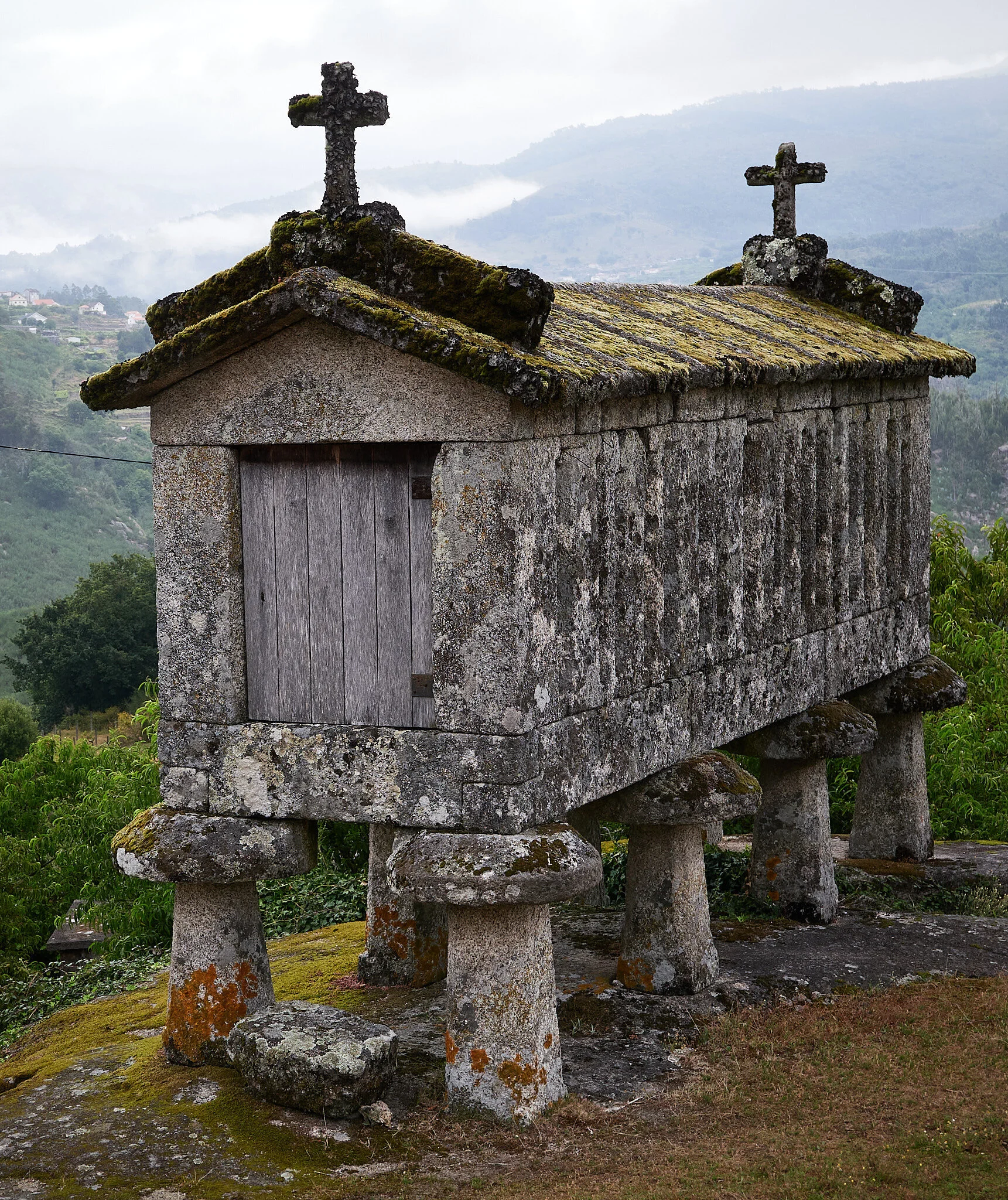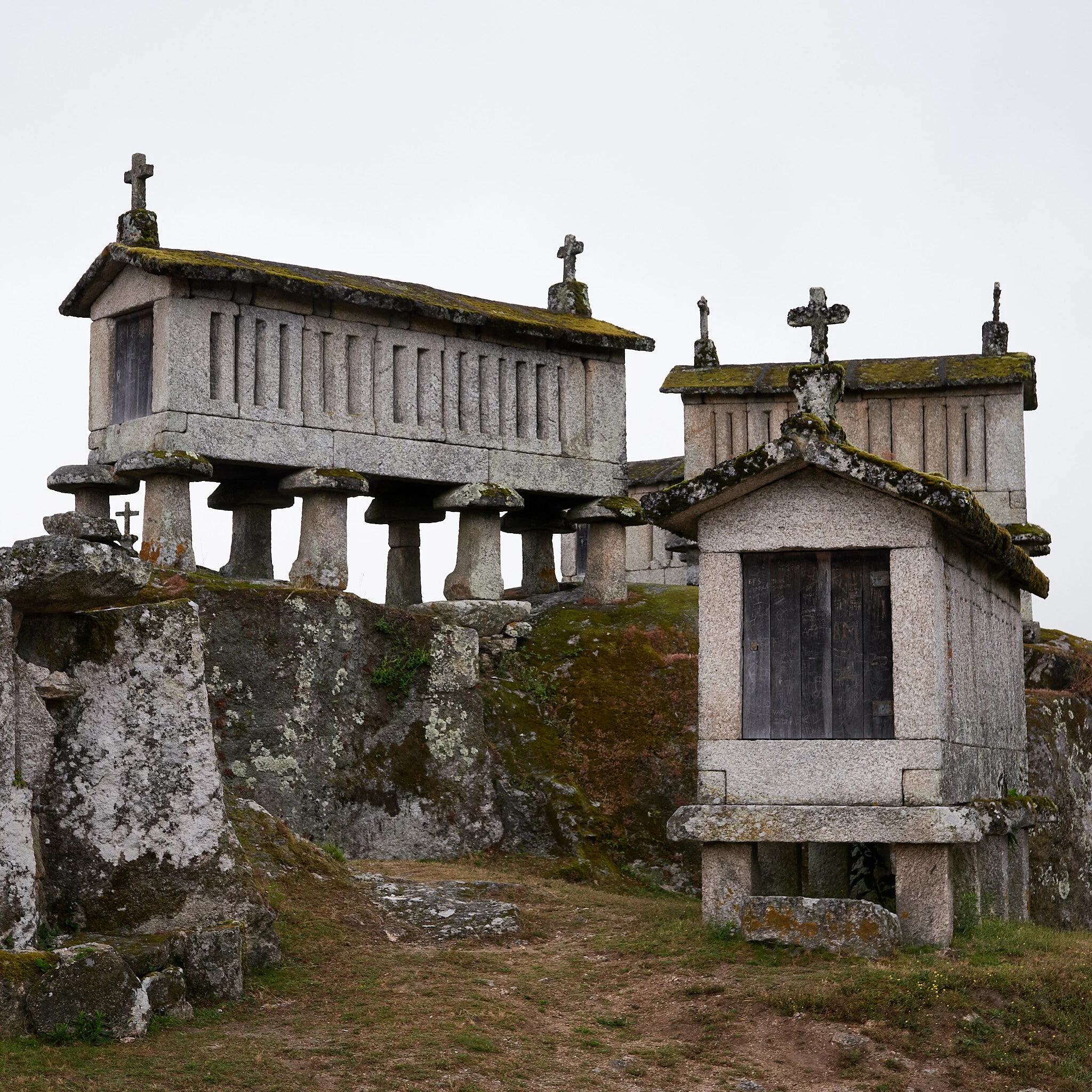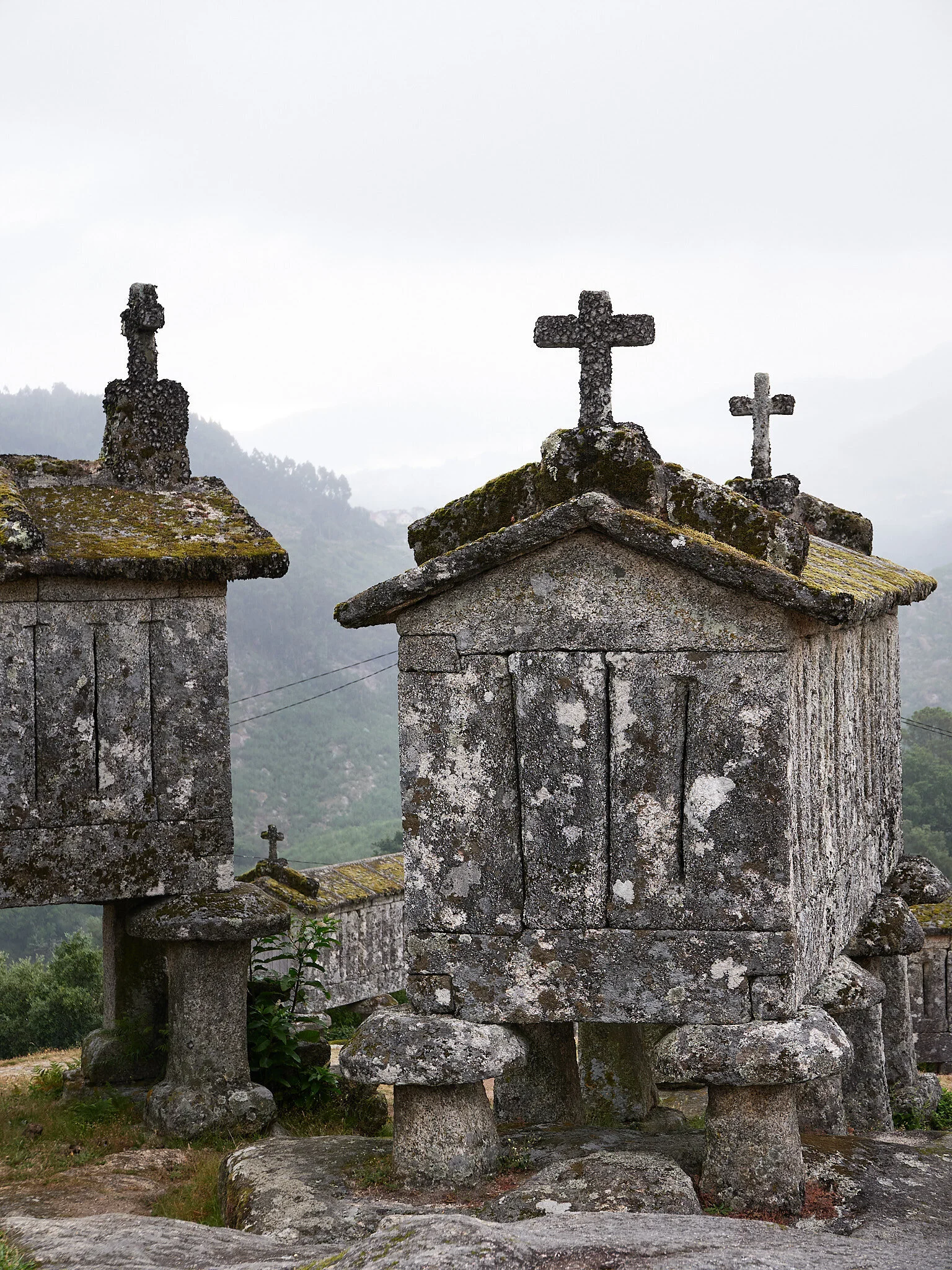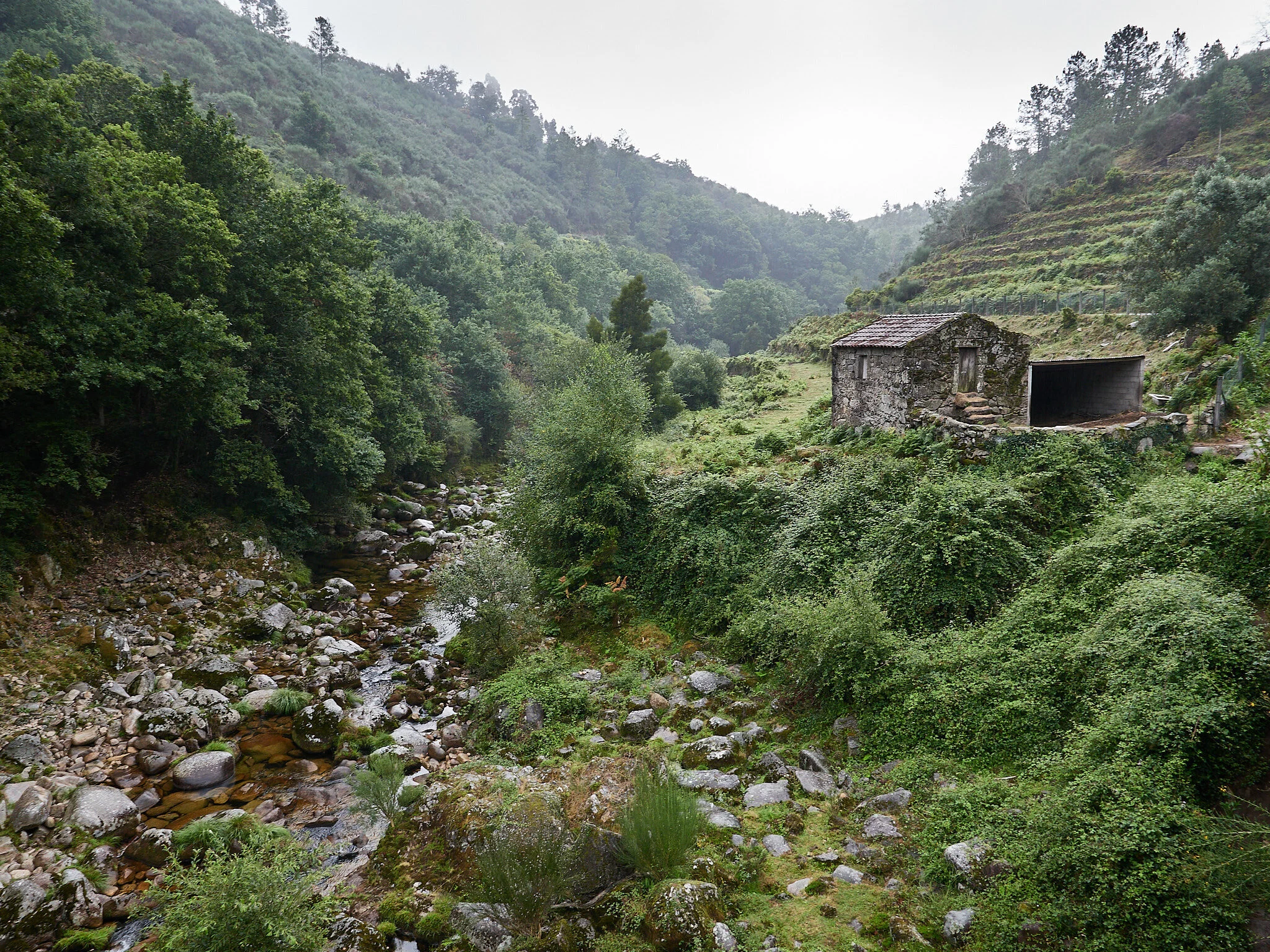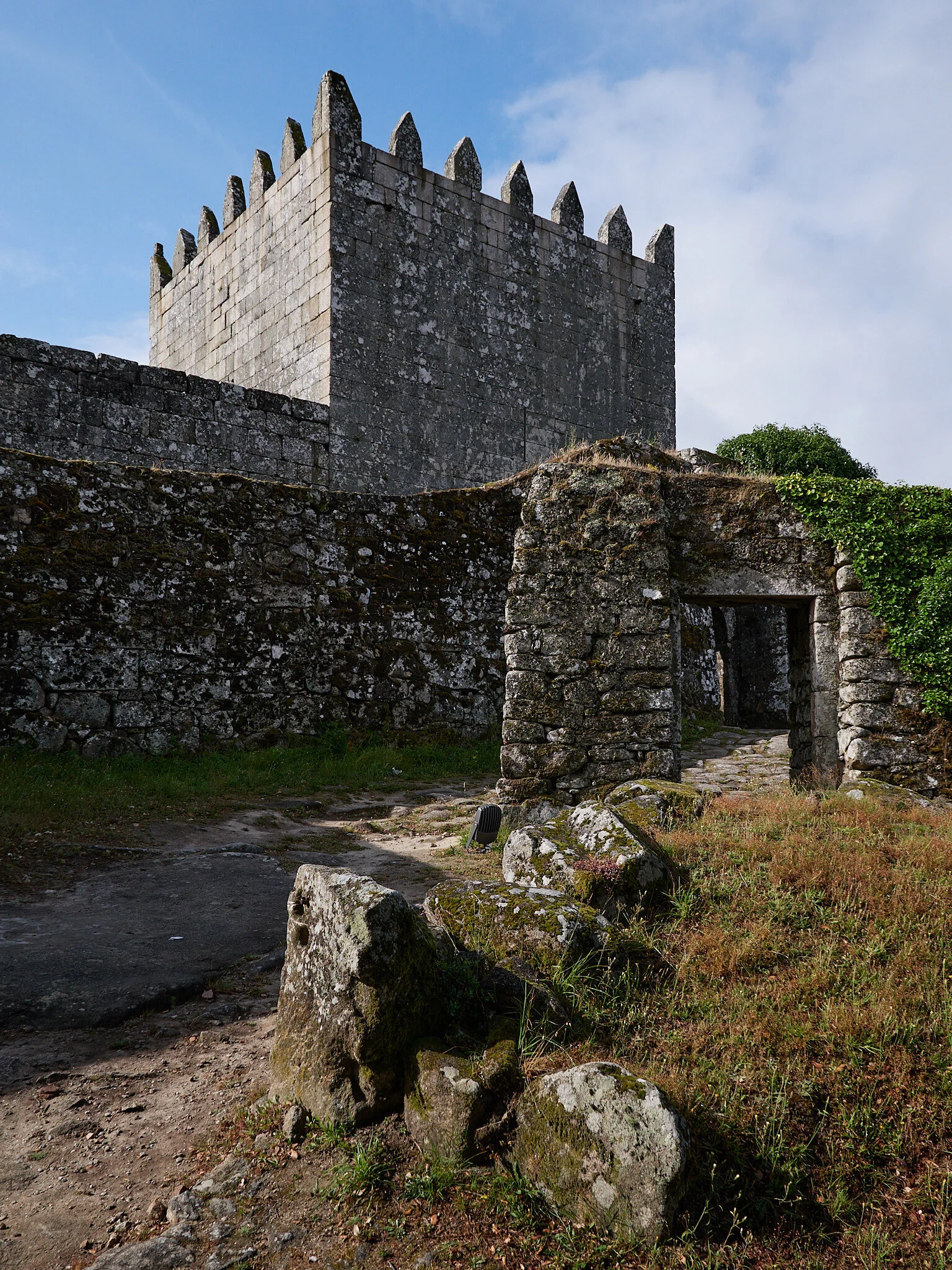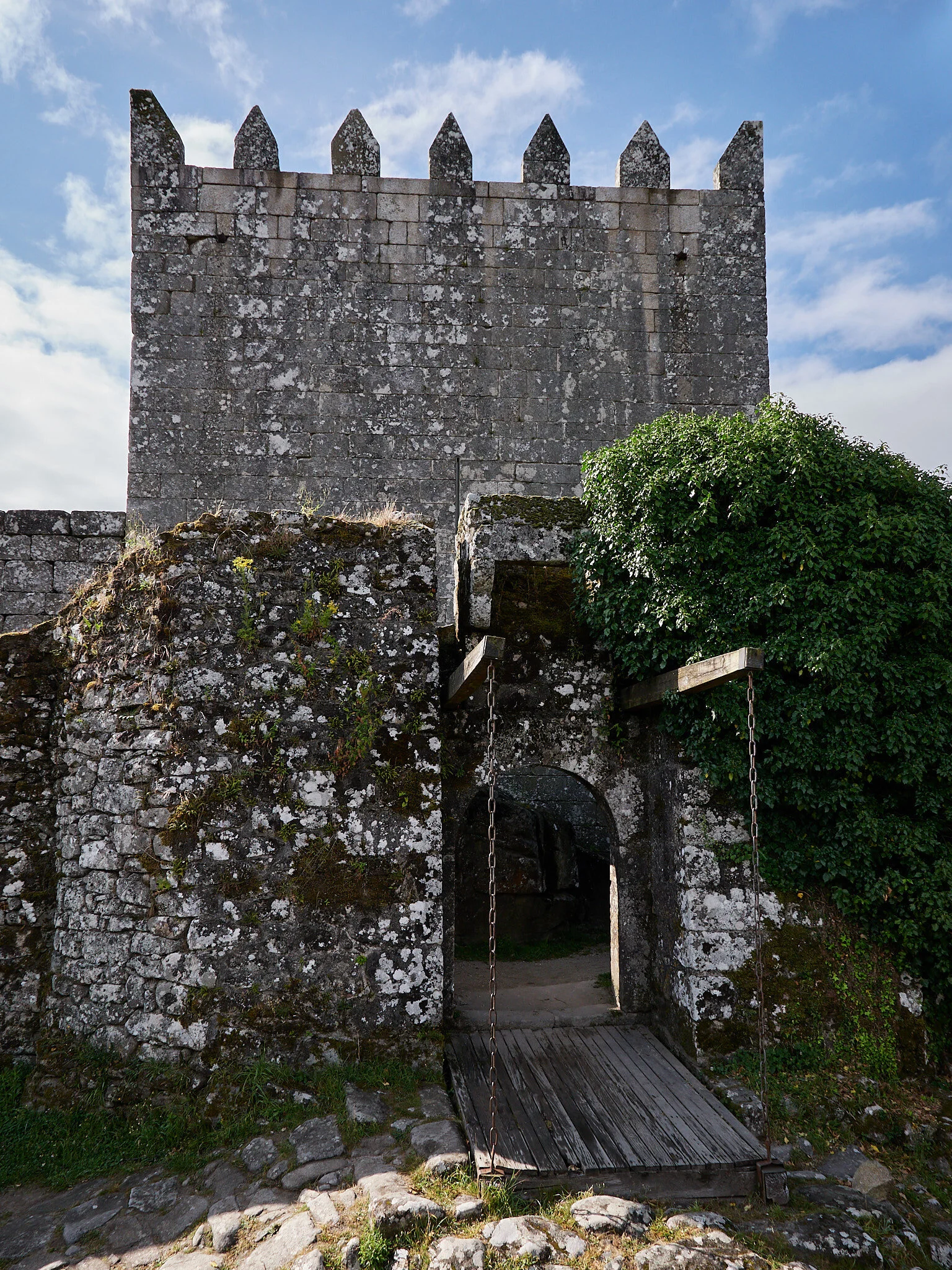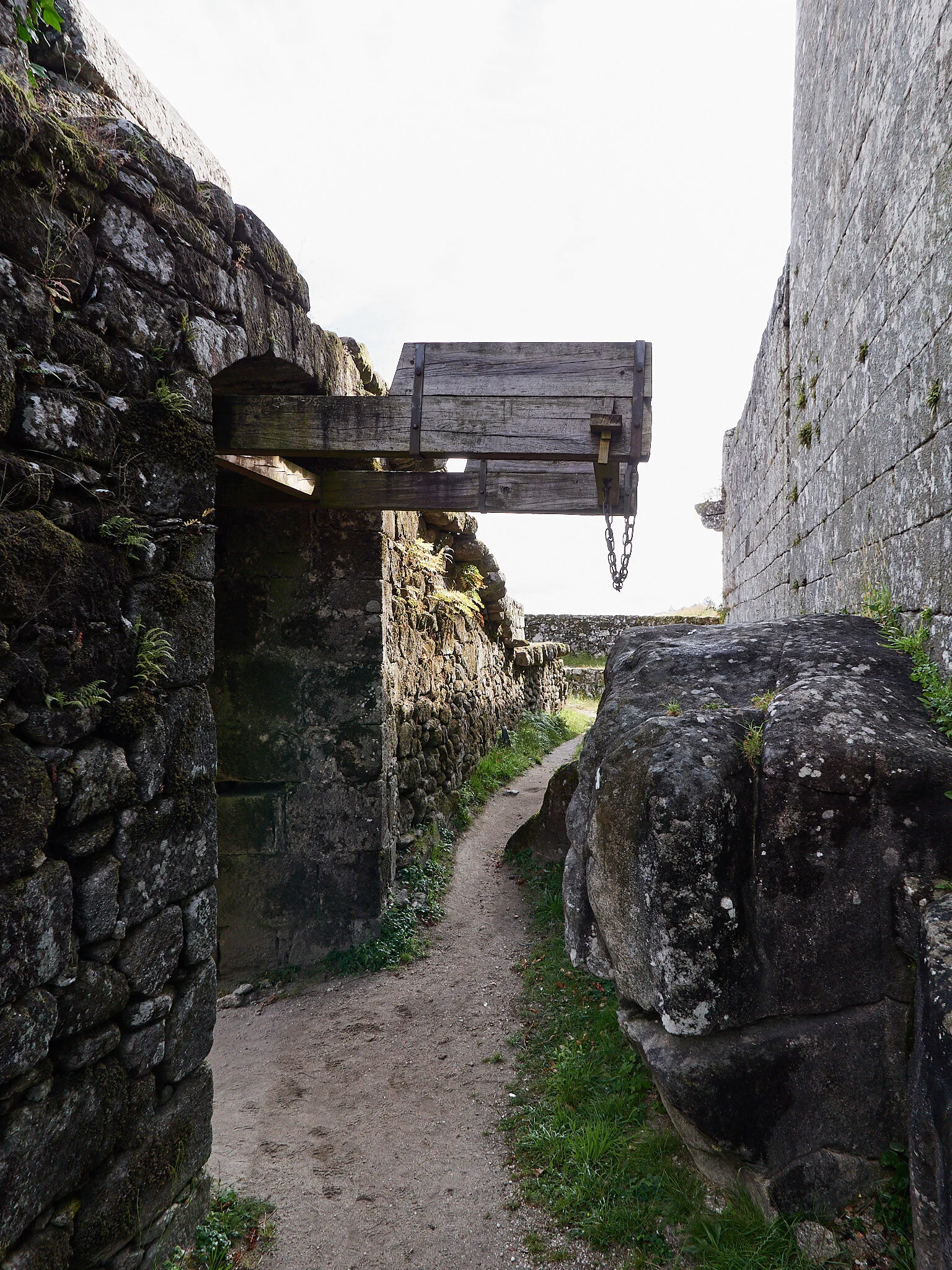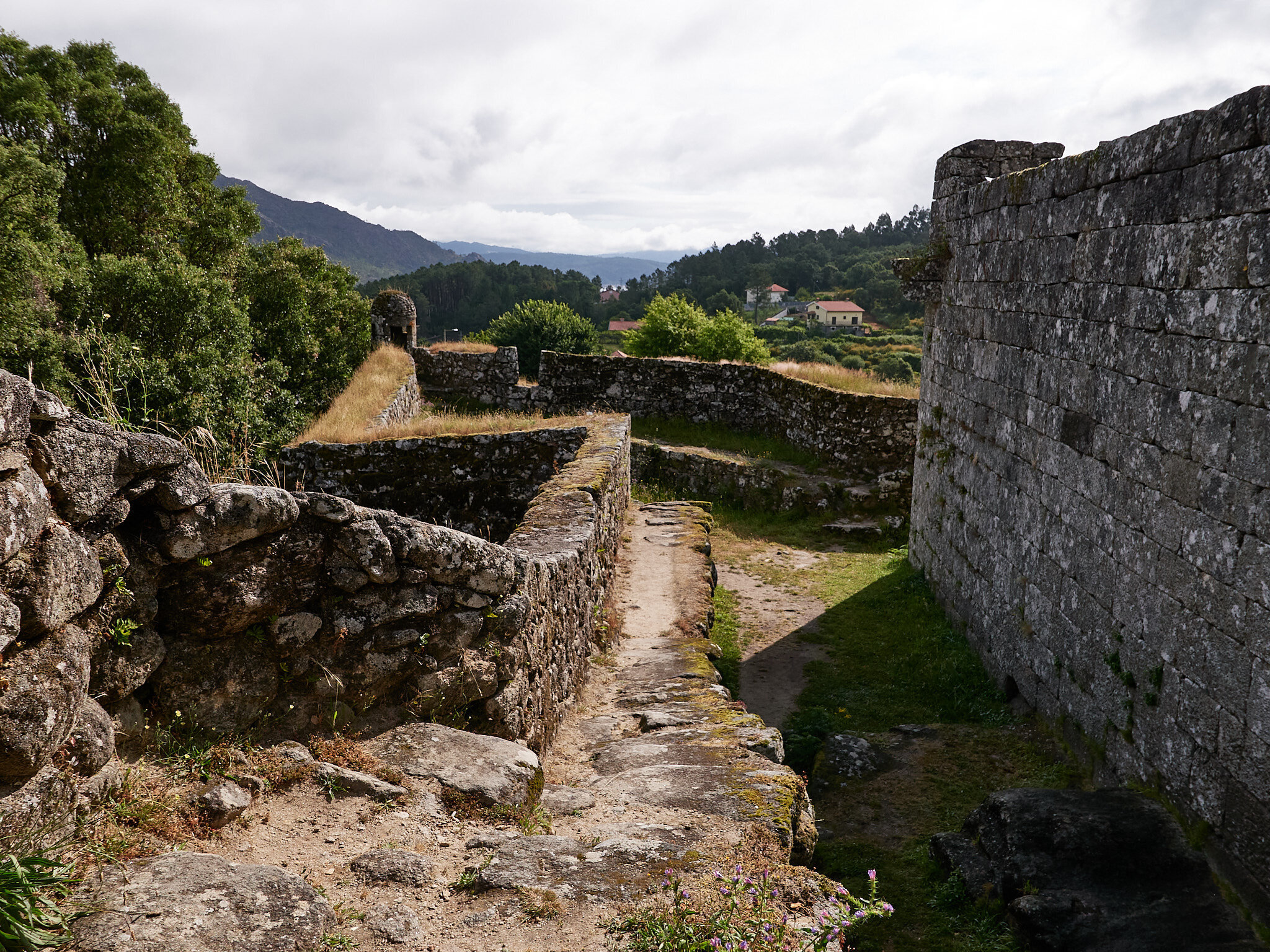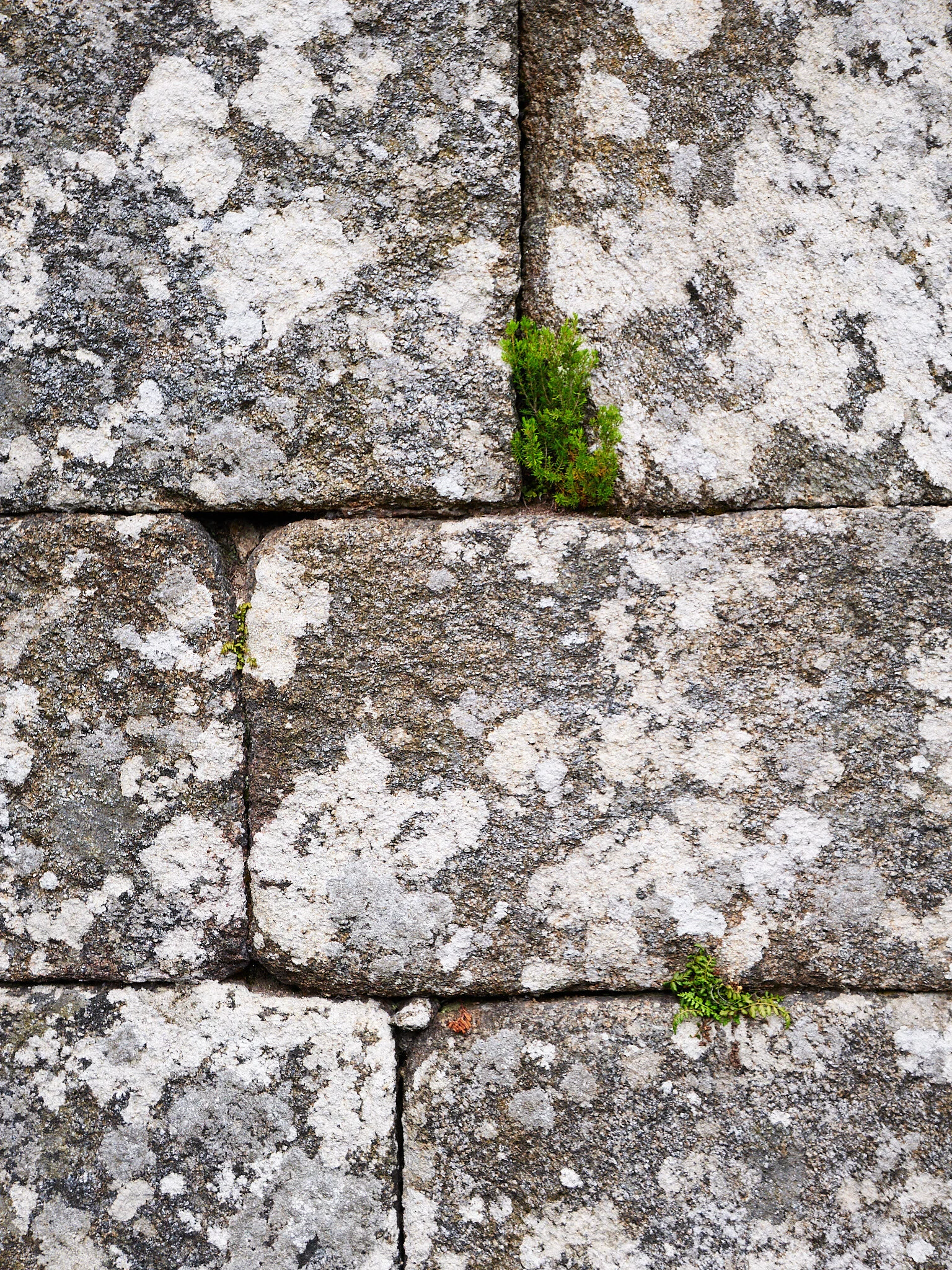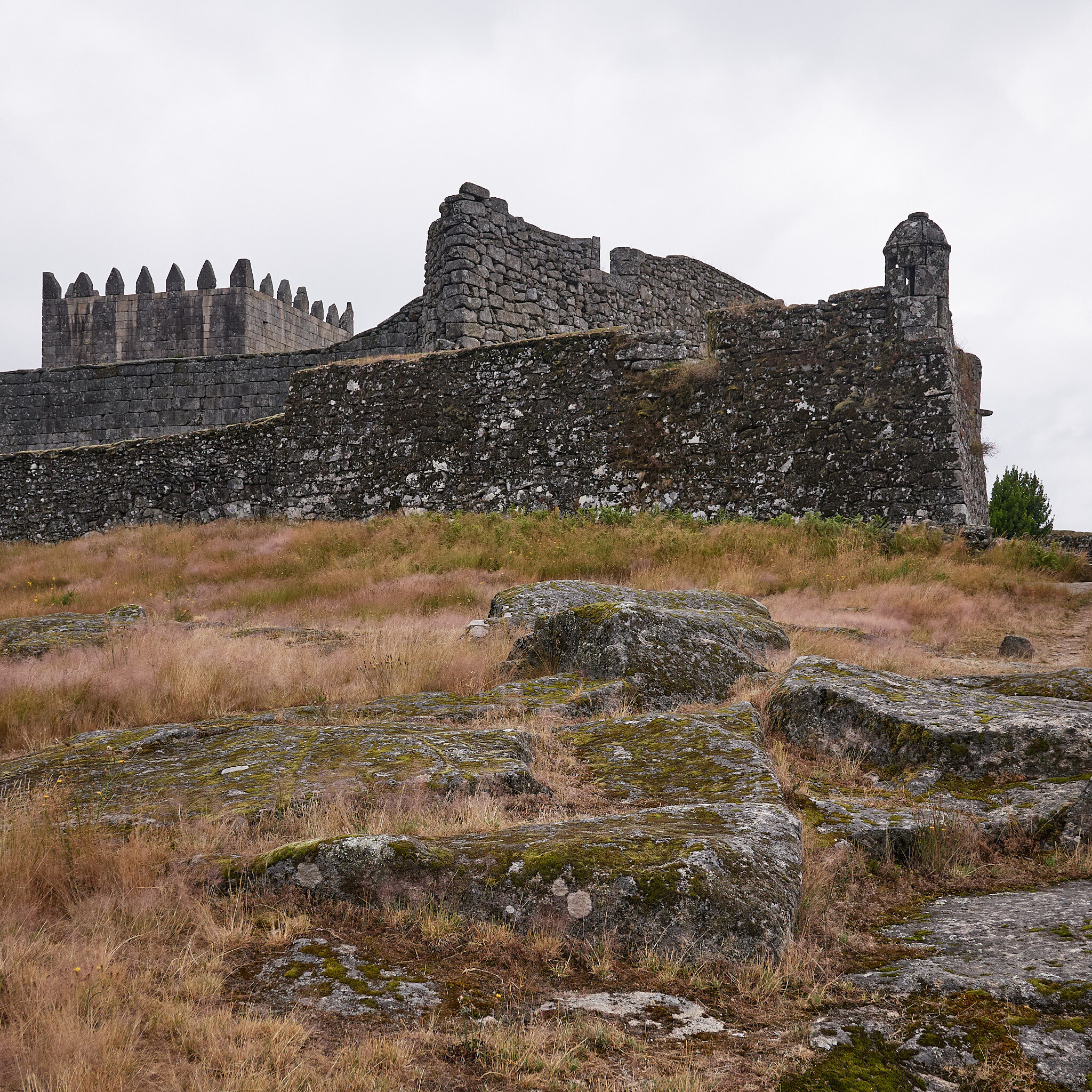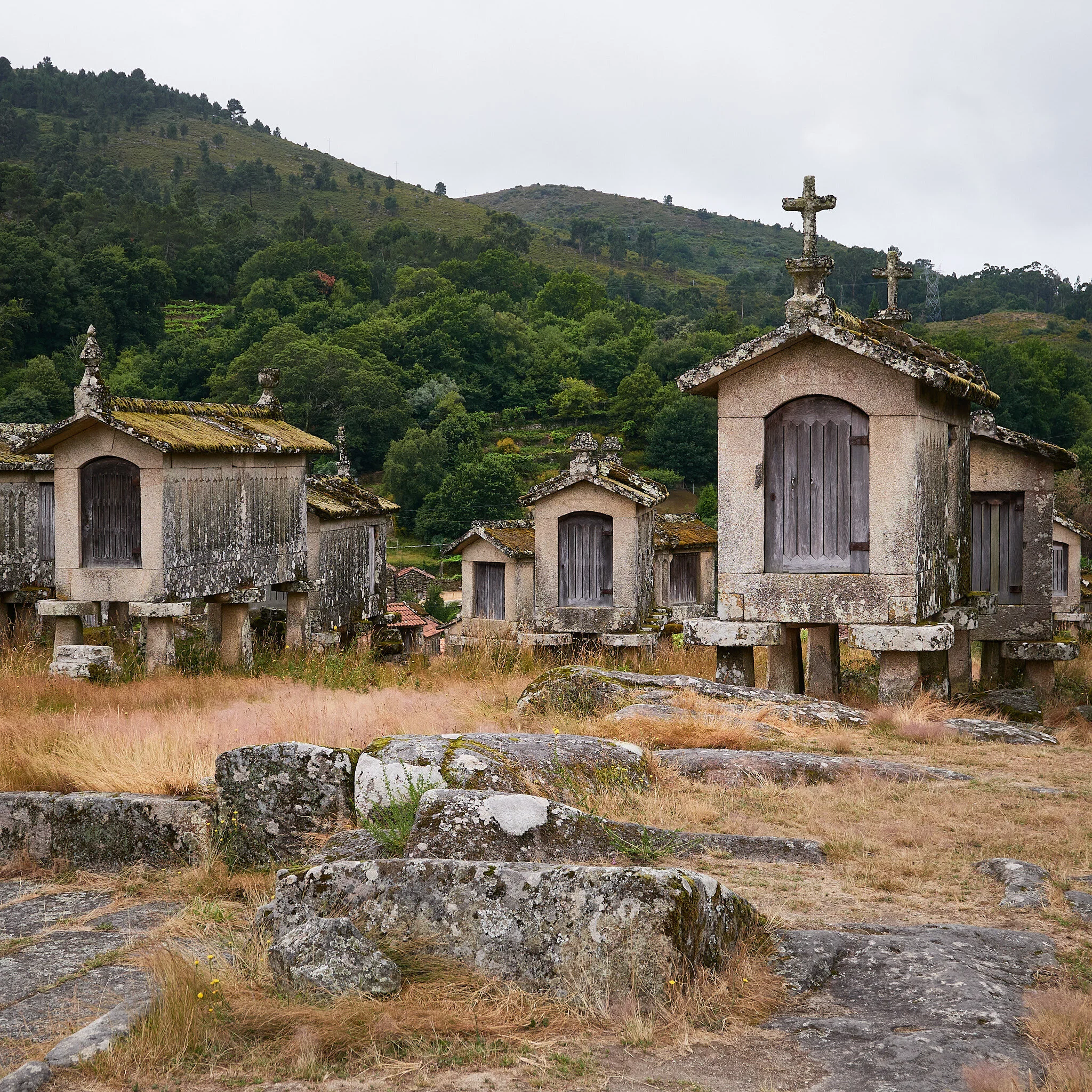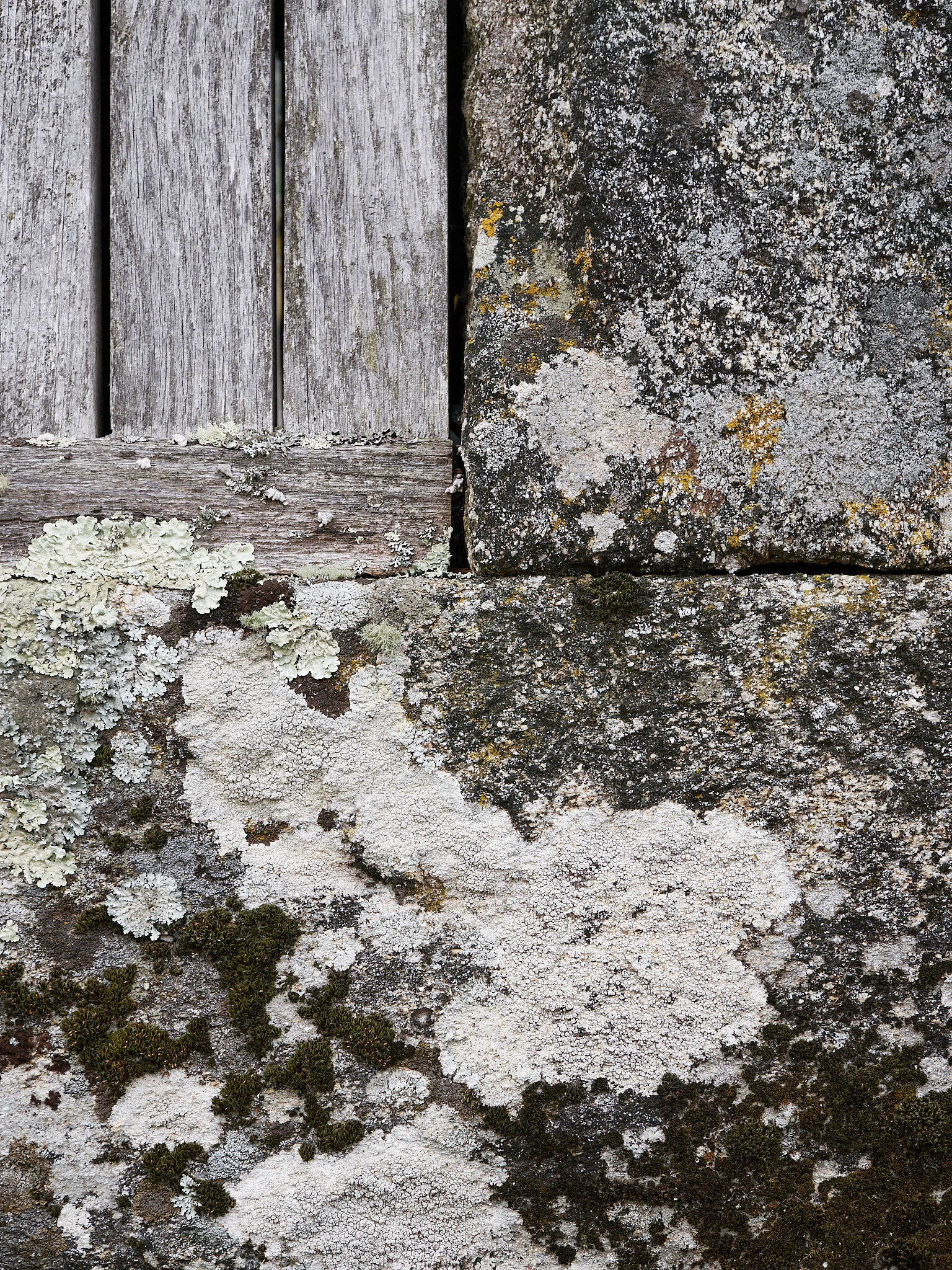Soajo e Lindoso
The trip we’d planned was a mix of old and new. We’d driven past Soajo on our first trip through the park, but this time I wanted to stop by and explore a creek we’d driven past (and marked on a map) and perhaps check out what the town is most famous for - its granaries.
As we pulled into town, there was a light mist in the air so we pulled into the city public parking area to see if things would settle down a bit. There we saw several RVs parked there (obviously overnight given we’d arrived about 7:30 am and the RVs had their window blinds up). That is something to keep in the back of our minds once we get the Bimobil. I haven’t gone on a rant about Article 50, passed in January 2020 by the Parliament, so I might as well mention it now. That bill effectively put a ban on one of the things that attracted us most about Portugal - RVs could pretty much park anywhere for a night or two (most towns have a dedicated area for free overnight parking that they prefer you do that at) without cost. At least that’s the way it was before we got here. Once it got out what the Parliament had done, the overloading community and the RV community threw a fit. While there were some real problems in the southern, tourist part of the country, the Parliament had used a hammer when something more appropriate was required. Fortunately, that law was amended again a couple of weeks ago, to allow up to 48 hours in a municipality without fines (or in a designated campground, RV park or area for that purpose), so long as one is outside one of the numerous protected areas. Given that Soajo is within the Peneda-Gerês National Park, knowing that they allow folks to camp overnight in the city parking area is a bonus. Not quite as good as camping on BLM land, but it’s free and free is good.
Given the light mist we decided to check out the granaries first to see if conditions might worsen. As we were leaving the car park, Ann noticed a city monument at its entrance
Soajo-Lindoso-_1012137 Peneda-GeresJPEG - 2048px for web use.jpg
Face it, any town that has its own breed of dog, and a monument to it, is a great town as far as we’re concerned.
The car park wasn’t very far from the granaries, which are visible from the main road leaving the town. These stone granaries are elevated to keep the rodents out, and ventilated to keep the goods from spoiling.
Interestingly, they’re also on a rock outcropping that gives one an interesting view of the area, to include the town.
I wasn’t expecting much in terms of photography and that was fortunate. I’ve always wanted to photograph these in foggy conditions, and we didn’t have that. But as I mentioned in a previous post, I took some advice from Thomas Heaton and told myself to work on something that will help me refine my skills. And given the multitude of structures, and the overlapping nature of them in most of the images, I tried to concentrate on harmonizing complex overlapping structures and to be attentive to the merging of elements that should be separated. So, for example, even though I was using my Lumix point-and shoot without a tripod, I still tried to take care with the placement of the crosses beneath the granary in the image below.
I also worked on trying to eliminate any visually distracting elements from the image, like the power lines that were a few feet above this granary.
And that’s how it went, taking my time to see if I could find an interesting grouping, and then carefully thinking through exactly where I should stand to have the greatest separation possible. St. Ansel did say, “A good photograph is knowing where to stand.” Of course, I wasn’t always successful. But even though I would eliminate that small granary between the others at the very rear of the image if I could, there is still something to be said about the effort it took to get all of the other components arranged just so.
Sometimes the best you can do is to give your eye something to play with and to hone your skills with images you know are not the greatest. It’s practice like that you come to appreciate when you’re in an incredible location with rapidly changing light conditions and your eye immediately sees something to correct to make the image even better before you take it (instead of moaning in frustration days later when you see it on your computer screen).
So Ann and I kept at it for a while, because the mist had stopped.
But not for very long. It came back quickly, and with a bit of rain to boot, so that by the time we got back to the car we were both a bit wet. Not totally drenched, but wet enough to know that the conditions weren’t ripe for what I was hoping for.
So we dried off the best we could and, given it was still early in the morning, we drove the short way to where I’d hoped we would be able to photograph some moving water just to check it out. The down-river view was nice enough, and we checked out the entrance to the up-river trail. Given that there’s a good parking spot right by the bridge, we decided this was a keeper of a location and that we would come back here again. We may even do that under similar conditions, but next time we’ll be fully prepared for them. This was a scouting trip and we’ve found a location!
Given it was fairly early and that another of the sites I’d planned to visit near Soajo (an entrance to the park that has a collection of pre-historic stones as part of its collection) hadn’t opened yet (not for another couple of hours), we decided to move on. Face it, we’ll be coming back so we can hit the Celtic ruins then.
Our next stop was up-river a bit to Lindoso - right across the border from Spain. We’ve read plenty of stories about how Portugal is a castle lover’s paradise, with all sorts of castles at an incredible density given the size of the country, and from the little we have seen, it is. One of the main reasons for that is the long border with Spain, a traditional opponent. There’s now an aquifer behind a dam at Lindoso, but across from the waterway is Spain, readily visible from the castle’s ramparts.
The castle in Lindoso is a bit different than many in Portugal in that it has not been heavily renovated or commercialized. You can drive up next to it and walk into it . . . well almost. We found out that the interior area (where they have a few exhibits apparently, and how you can access the highest parts of the castle) has been closed as a result of Covid and won’t open up until restrictions are relaxed. Still, the outer ramparts were accessible, and we were free to walk around as we chose. The best part is (again, for later), the town’s RV campsite is right at the base of the castle! Time to mark two free camping locations in our travel reference materials.
As you can see, the weather started breaking up by the time we got there and had taken a short walk down to a café for a bit of coffee. But as you’ll see from the remaining photographs, we had wave after wave of clouds, some of them brining a bit of moisture, though fortunately not rain.
By castle standards it was small, really more of a small fortification. Certainly no where near the size of the castle in Guimarães. Walking around the place, though, one could easily understand how the design would funnel people into kill zones and would allow defenders protection, but if some of the forward positions fell, would not offer any real protection to those on offense. The gate was just one of those features. Slots in the rampart to shoot through (or pour down boiling oil), and once you got through, there was a giant boulder about 2 steps in that would force you left or right.
Not to mention that there would be men on the wall above you, on both the right and the left as you entered the gate, trying to kill you.
So we wandered around the outer ramparts, making photographs with our point-and-shoot cameras, taking advantage of the various forms and changing light conditions.
I’ve often said that photography allows me to explore my environment, but I was really surprised how it got me thinking about why the various elements of the castle were where they were.
As I mentioned, Lindoso was basically part of the front lines on the Lima River, with Spain on the other side of the hill just in front of the fort.
It wasn’t all historical analysis though. As I said, the fort has not been extensively renovated, so there was a lot of plant life growing on the walls (as you can see). Of course I couldn’t resist working on some compositions.
Unfortunately, the interior of the castle was closed, because it would have been great to check that out. It really could not have been that old (unless it had been heavily updated to suit the ages), because the shooting portals along the exterior walls had paving on the ground below them to support cannons. One of the portals even had a cannon barrel laying on the ground.
Again, Ann and I took our time wandering around and exploring the place, making photographs whenever it suited us.
From the rear of the castle, you can see that Lindoso is not much of a city. And, like Soajo earlier in the day, the town has its own granaries.
We decided to check them out. The view back up to the castle was impressive. You could see how difficult it would be to make your way up and over the walls from this (or any) direction. Especially when you had people firing at you.
Lindoso’s granaries were just as interesting as Soajo’s, but a lot harder to photograph. They weren’t perched up on a rock outcropping, so removing merging elements like hillsides and power lines was much more difficult with these images.
Though they did offer compositions that I hadn’t thought to do earlier in the day.
And in case you were wondering just how old these were, the one below dates from 1842.
Obviously, others were newer granaries, and I doubt the wooden doors were that old, but I don’t doubt they’ve been here awhile.
The rest of the day was largely uneventful, other than we drove by a campground along the Lima River that we’d looked at online (a go-to place before we get the Bimobil, and maybe afterwards if we need a place by the river), and another prehistoric area we want to investigate.
All in all, it was a good scouting trip, leaving us feeling a bit better about the potential for interesting photographic opportunities once the summer passes.




